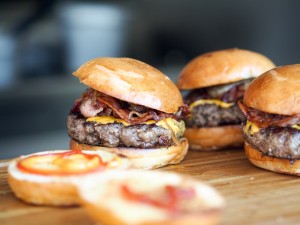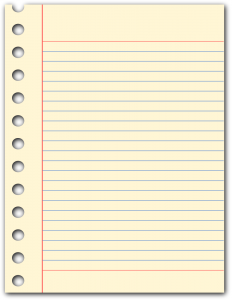What Is Flexible Dieting Or IIFYM?
Flexible Dieting, also know as IIFYM (If It Fits Your Macros) is not a ‘diet’, it’s a sustainable way of eating that will produce consistent results for the rest of your life.
Flexible Dieting involves tracking your protein, carbohydrates and fat intake, along with fibre to ultimately reach a calorie goal (leaving you in either a deficit, maintenance level or surplus). Putting the focus on HOW MUCH you are eating and not WHAT you are eating.
Remember, losing weight or gaining weight ultimately depends on whether you are in a negative or positive energy balance, regardless of what you eat.
Protein and Carbohydrates= 4 calories per gram
Fat= 9 calories per gram
*This helps explains why a high fat diet with minimal protein puts you in an overfed state with fats being worth more than double the amount calories compared to protein and carbs.
E.g. 200g of protein, 225g of carbohydrates & 60g of fats = 2,240 calories.
Protein: 200 x 4 = 800
Carbohydrates: 225 x 4 = 900
Fats: 60 x 9 = 540
800 + 900 + 540 = 2,240
The beauty of IIFYM is that it allows you to pick and choose (or rotate) your food sources without feeling ‘guilty’ or going off track with your meal plan in the belief that there are no ‘magic foods’ that will help you lose fat or build muscle, there is simply calories in vs calories out. Meaning you get to continue eating the foods you enjoy while making progress toward your goals. Flexible Dieting can lead to long term consistency and sustainability as it eliminates any food group restrictions that you find with most meal plans or ‘clean eating’ diets.
*Important note: Fibre and fruit intake also needs to be considered when utilising Flexible Dieting, it’s recommended that you eat 14g of fibre and 1 piece of fruit for every 1,000 calories consumed.
Traditional ‘clean eating’ versus Flexible Dieting
What is clean eating?
Typically ‘clean eating’ involves sticking to a restricted group of ‘clean’ and healthy foods while completely disregarding their caloric value. Presuming that as long as you eat ‘clean’ you will see results.
What’s the difference between the two?
Clean eating typically involves eating small meals every 2-3 hours and sticking to a very limited group of food choices which can often lead to the mentality of labelling foods as ‘good’ or ‘bad’ which can cause a lot of problems including possible eating disorders.
Flexible Dieting gives you a calorie and macronutrient target to reach by the days end, allowing you to choose when and how you reach these targets. Assuming you include a sufficient amount of micronutrients (as seen in the first section) into your calorie goal, then your food selection is completely irrelevant. This allows a lot more flexibility with your nutrition, making ‘dieting’ a lot easier to adhere to. What it also does is help you come to realise that all foods contain calories, meaning there are no ‘good’ or ‘bad’ foods when it comes to body composition.
Example Of Flexible Dieting And Choosing Foods For Their Calorie Value
“All foods contain calories”
Example 1:
150g of kangaroo, 125g of brown rice and 100g of mixed veggies
Protein: 40g
Carbohydrates: 42g
Fats: 9g
Calories= 409
Example 2:
6 inch wheat bread sandwich from Subway with chicken breast, tomato, spinach, carrot, swiss cheese and BBQ sauce
Protein: 40g
Carbohydrates: 42g
Fats: 9g
Calories= 409
Calculating Your Calorie And Macronutrient Intake To Suit YOUR Goal
Step 1: Calculating Maintenance Calories
Our maintenance calories will give us an indicator of an estimated amount of calories you need to take in to maintain your current body weight. It also helps us work out how many calories to add or subtract to either reduce body fat or increase lean muscle mass.
*In the example below I’ll be using Kilograms. To convert this to lbs simply divide the numbers below by 2.2
Bodyweight x
28.5= Sedentary job and do little to no exercise
31= Moderately active job and train 2-3 times per week
33= Active job and train 2-3 times per week, or sedentary job and train at a high intensity 4-6 times per week.
35= Active job and train at a high intensity 5-6 times per week
37.5= Athlete or active job training at a mod-high intensity every day or twice daily
*Example using a 80kg individual who is a Physical Education teacher and trains at a high intensity 5 x per week.
80 x 35 = 2,800
This means if this individual ate 2,800 calories per day (or close enough to it), they would maintain their current body weight presuming their activity level/energy expenditure wasn’t drastically changing.
IMPORTANT
Although this formula and other online calculators are great for giving you a starting point for what your maintenance calories should be, the most accurate way to find your maintenance is to track your NORMAL food intake over the span of 1-2 weeks. If your body weight stays the same or very close to it then simply get an average daily calorie number from those 1-2 weeks that you tracked your food and you now have your exact maintenance calorie intake.
Step 2: Choosing your goal
Fat loss/Lose weight:
In order to lose weight you must put yourself into a slight calorie deficit, meaning you are expending more energy/calories than you are taking in.
My suggestion: Reduce calorie intake to 200-500 calories below maintenance level
Muscle gain/Gain weight:
In order to gain weight you must put yourself in a slight calorie surplus, meaning you are taking in more energy/calories than you’re expending.
My suggestion: Increase calorie intake to 100-500 calories above maintenance level.
Step 3: Calculate macronutrient breakdown
*In the example below I’ll be using Kilograms. To convert this to lbs simply divide the numbers below by 2.2
Protein: Bodyweight x 2-2.5g
Fats: Bodyweight x 0.75-1.2g
Carbohydrates: Fill the remaining calories
*Example using an 80kg individual eating 2,800 calories per day.
Protein intake: 80 x 2.25 = 200g
Fat intake: 80 x 1 = 80g
Carbohydrate intake: This is where it can get a little confusing. What we are going to do is subtract the calories coming from Protein and Fats from our 2,800 calorie total. Remember Protein and Carbohydrates are worth 4 calories per gram and Fats are worth 9.
(200g of protein x 4= 800) + (80g of fat x 9 = 720) = 1,520 calories
2,800 – 1,520 = 1,280 calories
1,280/4 = 320g of carbs
*Important: Once your protein intake is set, your carbohydrate and fat ratio comes down to YOUR personal preference. It will make no difference to overall body composition as long as your calorie intake is set correctly.
Set Macros May Not Be For Everyone
Flexible Dieting doesn’t necessarily have to be tracking macronutrients. If this is all too much for you then you may just want to track calories. Another option is tracking calories with a protein minimum. For example, your aim might be to eat 2,800 calories with a minimum of 200g of protein. The rest of the calories can be filled in however you choose as long as you reach your fibre goal also.
The Advanced Flexible Dieter (Intuitive Eating)
For an advanced Flexible Dieter there will come a point in time where you are extremely accurate at eyeballing your food measurements. If you happen to reach this point then you may choose to eat intuitively. However, I would only recommend this for someone who is extremely confident that they know WHAT they are eating and also preferably eating in a calorie surplus at that point in time.
Here’s A Quick Look At Some Of The Staple Foods I Like To Eat From Each Macronutrient Group Before Adding In Some Goodies
Protein: Skinless chicken breast, lean beef, kangaroo, eggs, whey protein, protein bars, fish
Carbohydrates: Fruit, rice, potato, pasta, oats, rice cakes, fibrous veggies, bagels
Fats: Nuts, avocado, nut butters, olive oil, egg yolks, full cream milk
“Now I Know What My Calorie Intake Should Be, How Do I Track It?”
First of all, you’re going to need some food scales
Weighing your food is an extremely important aspect of Flexible Dieting, so before you get started, pick up a set of digital food scales (usually only $5-20) as these will become your best friend!
PRO TIP: Always weigh your food raw. This is the most consistent way of checking the weigh of your foods.
MyFitnessPal
There are a number of great phone apps you can use to track your calories and macronutrients (along with fibre etc) although MyFitnessPal is the one I’ve always used.
Checkout this MyFitnessPal tutorial to get started!
Other apps you can try: MyMacros, CalorieKing, OnTheRegimen
OR
GOOD OLD PEN AND PAPER
If tracking calories on your phone just isn’t your thing, then you can always resort back to keeping a running total of everything you eat on a notepad, although this can be a lot more time consuming and very difficult to get the nutritional information on certain foods.
What You Should And Shouldn’t Expect From Flexible Dieting
•No specific meal timing. Fit your meals in around your own daily schedule as long as you reach your target calorie intake by the end of the day.
•No food group restrictions. Remember, hit your calorie and fibre intake and get as close as you can to your macronutrient numbers and you will continue to progress, regardless of WHAT you’re eating.
•No negative effects on your social life or ability to eat out. Eating out doesn’t have to be your downfall anymore. Simply allow enough of a calorie buffer that you can pick a meal you like and fit it into your calorie requirements.
•Increased knowledge on what you’re eating and the effects that each macronutrient has on YOUR body. Flexible Dieting increases your awareness as to what’s in certain foods that you’ve been eating your whole life. It also gives you the ability to figure out how your body responds to certain macronutrients and foods.
•No more cheat meals! If you feel like eating something then eat it, it’s as simple as that.
•Adherence. This is a sustainable way of eating that doesn’t feel like a diet. Flexible Dieting is NOT a diet, it’s a way of eating.
The 90/10 Rule
As a rule of thumb, I recommend that you should be aiming to get 90% of your calories from nutrient dense whole foods while allowing the last 10% for things that aren’t seen as ‘healthy’. Maybe even a glass of wine with dinner. (Alcohol And Weight Loss; How To Drink Alcohol And Lose Weight)
Example Of A Day Of Eating Using Flexible Dieting
Meal 1: 1/2 cup of oats with 1 scoop of whey protein mixed in cook in water. Sugar free maple syrup and 20g of peanut butter used as toppings.
Protein: 34g Carbs: 28g Fat: 15g
Meal 2: 1 regular sized apple and 30g of oven roasted almonds.
Protein: 7g Carbs: 23g Fat: 17g
Meal 3: 200g of chicken breast (raw weight) with 250g of long grain white rice and 100g of mixed veggies.
Protein: 51g Carbs: 50g Fat: 8g
Meal 4: 1 scoop of whey protein with water, 4 thick rice cakes with 40g of peanut butter and 30g of strawberry jam and 1 banana.
Protein: 39g Carbs:83g Fat: 27g
Meal 5: 225g of Kangaroo (raw weight) cooked in 1 tsp of olive oil with 200g of sweet potato (raw weight) and 100g of green veggies.
Protein: 46g Carbs: 49g Fat: 10g
Meal 6: 1 Nestle Skinny Cow ice cream cookie
Protein: 3g Carbs:27g Fat: 2g
DAILY TOTALS: Calories: 2,480 Protein: 180g Carbs: 260g Fat: 80g
NOTES
•There is 2 servings of fruit and 3-4 servings of veggies along with a sufficient amount of fibre.
•There is plenty of variety.
•The majority of the foods are nutrient dense whole foods although there is also foods that you wouldn’t typically see on a ‘diet’.
•There is no specific timing of meals.
The Proof Is In The Pudding (Literally)
Flexible Dieting has allowed me to get down to extremely low levels of body fat every time I’ve prepped for my bodybuilding/physique competitions. I was literally eating ice cream almost every day during my prep. It has also helped me go from an extremely underweight Basketballer to now competing on an International stage as a Natural Physique Competitor.
Client testimonial: “The Flexible Dieting approach allows me to lose weight and still enjoy
the occasional treat without feeling guilty. I cannot express how easy it is to incorporate this program into your
lifestyle.”
FAQ
Does fibre count towards my carbohydrates? Yes, fibre does count towards your carbohydrates and should be added to your daily totals, although you should not be separating carbs and fibre and then adding them separately. For example, if you eat something with 15g of carbs and 6g of fibre, then you just ate 15g of carbs and not 15 + 6.
If I eat under or above my calorie goal should I make up for it the next day? No, the best thing you can do is forget about it and move on (Unless you are in a contest prep and you eat under, in that case check out this article: Carb Cycling For Fat Loss). Jump straight back onto your usual macros and training program the very next day. This is where most people go wrong and end up starving themselves and doing stupid amounts of cardio to make up for their ‘big nights’ or ‘binges’. This can lead to poor training sessions and, in some cases, severe eating disorders.
Does doing cardio on an empty stomach burn more fat? In my opinion your body does not burn fat according to how much food has been taken in before exercise. Weight gain or loss is dependent on whether or not you are in a negative energy balance. If you’d rather train on an empty stomach then so be it, but if you know you train better with some food in your system then don’t be afraid to fuel up ahead of your training session.
Should I cut out coffee and tea? No way! Just know that your caramel latte you have each morning still has calories in it and should be accounted for (Same goes with the 2-3 sugars you might be adding in).
Should I cut out sugar? No, it is not necessary to eliminate all sugar from your diet. It’s never a good idea to completely eliminate something from your diet that you know you can’t go your whole life without.
Does it matter if I eat carbohydrates at night? No. Again, your body does not know what time of the day it is. Just aim to reach your carbohydrate intake goal by the day’s end, whether you spread it out over six meals or as little as two meals. You will still see the same results in the long term.
Should I be eating smaller meals every two to three hours? This is once again personal preference. A number of studies have shown that there is no benefit to eating smaller meals every few hours compared to three or four bigger meals spread out further throughout the day. Just focus on hitting those macros and you will make progress. (Do I need to eat six times a day to keep my metabolism high?)
Will Sodium make me gain fat? A change in sodium intake can retain water in the body, leading to an increase on the scales and a ‘softer’ look. This is not fat gain but simply your body holding a bit of extra water. This can be eliminated by drinking MORE water, which will cause your body to flush the excess salt out.
What if the ‘MyFitnessPal’ app tells me I’ve already hit my daily calorie intake but still haven’t met my macros? Always aim to hit your macronutrient goal and don’t worry about what the calorie count says. Sometimes the calorie number will not add up with the macros due to some inaccuracy on the app.
Can I still drink alcohol? If so, how do I count that into my macros? Yes of course you can. When drinking alcohol you should know that it is filled with empty calories. This means that although your beer may say it has 6g of carbohydrates, 4g of protein and 0g of fats it may still contain 150 calories. (6g of carbs + 4g of protein should = 40 calories.) The best way to track your Friday night drinks is to subtract the total calories from either your daily carbohydrate or fat macros. For example, if I subtract it from carbohydrates it would look like this… 150/4=37.5g of carbohydrates. So I would just subtract that 37.5g of carbohydrates from my daily totals and that way my drink is accounted for.
SUMMARY
Flexible Dieting isn’t a diet, it’s a way of eating and it’s a lifestyle. The key message I want to give from this blog post is that the focus needs to shift from WHAT you are eating, to the AMOUNTS you are eating. This isn’t a quick-fix or some 4 week program to get you shredded and then put all the fat back on once it’s over. This is a sustainable way of eating that you can literally use starting RIGHT NOW and continue using it for the rest of your life.
-Flexibility is the key to sustainability















